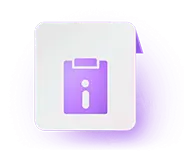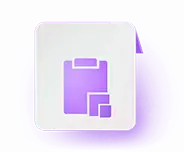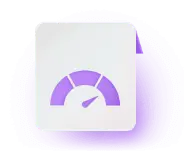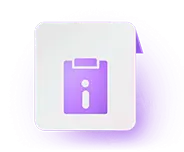HP Board Class 7 Study Material 2025: Are you a curious person who likes to learn new things and who also finds school books boring?...

Himachal Pradesh Board Class 7 Study Material 2025
January 30, 2025
CBSE Class 7 is an important stage in the Indian education system, as it marks the transition from primary to secondary education. This stage is significant as it lays the foundation for higher education and helps students develop a strong understanding of key concepts in various subjects. CBSE Class 7 curriculum includes subjects such as Mathematics, Science, Social Studies, English, Hindi, and Sanskrit, which are crucial for building a strong academic base for students.
CBSE Class 7 syllabus is designed to provide a proper education to students, catering to their intellectual, social, and emotional development. The curriculum includes a mix of theoretical and practical learning, with a focus on enhancing critical thinking, problem-solving, and analytical skills. CBSE Class 7 students are also exposed to a range of extracurricular activities that promote creativity, teamwork, and leadership skills. Overall, CBSE Class 7 is a crucial stage in a student’s academic journey, as it sets the stage for higher education and helps build a strong foundation for future success.
Every school affiliated with the CBSE board analyses the performance and growth of the students by following the Continuous and Comprehensive Evaluation (CCE) through Formative Assessments and Summative Assessments (FA and SA) as per the guidelines of CBSE.
Evaluation is based on three core subjects: Mathematics, Science, Social Science and two language subjects. One of the languages is English, and the other language is optional. The optional language can be any one of the following: Hindi, Sanskrit, Urdu, regional language, or foreign language.
CBSE also gives equal importance to co-curricular activities. The examination is conducted in two terms. According to the new pattern, the assessment will be divided into two areas. The report card will include marks for both summative and formative assessments.
Scholastic Areas: The following are the scholastic areas on which a child or student is assessed:

The syllabus is extremely important for the students to prepare for the exams. It acts as a roadmap for what the students will have to study throughout the academic year. CBSE provides a detailed syllabus for all the Classes that is further provided to the students by the respective schools. Below we have provided a detailed CBSE Class 7 subject-wise syllabus for your reference:
The National Council of Educational Research and Training (NCERT) syllabus helps learners realise that Mathematics relates to our experiences and is used daily. It also emphasises the development of mathematical understanding and thinking in the student. Below we have provided the CBSE Maths syllabus for class 7:
| Chapter No. | Chapter Name |
|---|---|
| Chapter 1 | Integers |
| Chapter 2 | Fractions and Decimals |
| Chapter 3 | Data Handling |
| Chapter 4 | Simple Equations |
| Chapter 5 | Lines and Angles |
| Chapter 6 | The Triangle and Its Properties |
| Chapter 7 | Congruence of Triangles |
| Chapter 8 | Comparing Quantities |
| Chapter 9 | Rational Numbers |
| Chapter 10 | Practical Geometry |
| Chapter 11 | Perimeter and Area |
| Chapter 12 | Algebraic Expressions |
| Chapter 13 | Exponents and Powers |
| Chapter 14 | Symmetry |
| Chapter 15 | Visualising Solid Shapes |
CBSE Class 7 Science syllabus is designed to help learners understand the concepts intuitively by focusing on interesting activities, experiments, projects, etc. Once the students are familiar with the syllabus, they must make it a point to prepare for the exams in a better manner. They can follow the syllabus thoroughly and work on scoring good marks in the exam. Below we have provided the updated syllabus for CBSE Class 7 Science:
| Chapters | Name of the Chapter |
|---|---|
| Chapter 1 | Nutrition in Plants |
| Chapter 2 | Nutrition in Animals |
| Chapter 3 | Fibre to Fabric |
| Chapter 4 | Heat |
| Chapter 5 | Acids, Bases, and Salts |
| Chapter 6 | Physical and Chemical Changes |
| Chapter 7 | Weather Climate and Adaptation of Animals to Climate |
| Chapter 8 | Winds, Storms, and Cyclones |
| Chapter 9 | Soil |
| Chapter 10 | Respiration in Organisms |
| Chapter 11 | Transportation in Animals and Plants |
| Chapter 12 | Reproduction in Plants |
| Chapter 13 | Motion and Time |
| Chapter 14 | Electric Current and Its Effects |
| Chapter 15 | Light |
| Chapter 16 | Water: A Precious Resource |
| Chapter 17 | Forest: Our Lifeline |
| Chapter 18 | Waste Water Story |
Social Science is a fundamental part of general education since it aims to develop an empirical, reasonable and humane outlook. As it is divided into three units: Political Science, Geography and History, students will need to ensure that they follow the syllabus and prepare for the exam accordingly. We have added CBSE Class 7 Social Science syllabus for your reference:
| Chapter No. | Chapter Name | Subject |
|---|---|---|
| Chapter 1 | On Equality | Social and Political Life |
| Chapter 2 | Role of Government in Health | |
| Chapter 3 | How the State Government Works | |
| Chapter 4 | Growing Up as Boys and Girls | |
| Chapter 5 | Women Change the World | |
| Chapter 6 | Understanding Media | |
| Chapter 7 | Understanding Advertising | |
| Chapter 8 | Markets Around Us | |
| Chapter 9 | A Shirt in the Market | |
| Chapter 10 | Tracing Changes Through a Thousand Years | History |
| Chapter 11 | New Kings and Kingdoms | |
| Chapter 12 | The Delhi Sultans | |
| Chapter 13 | The Mughal Empire | |
| Chapter 14 | Rulers and Buildings | |
| Chapter 15 | Towns, Traders, and Craftsperson | |
| Chapter 16 | Tribes, Nomads, and Settled Communities | |
| Chapter 17 | Devotional Paths to the Divine | |
| Chapter 18 | The Making of Regional Cultures | |
| Chapter 19 | Eighteenth-Century Political Formations | |
| Chapter 20 | Environment | Geography |
| Chapter 21 | Inside Our Earth | |
| Chapter 22 | Our Changing Earth | |
| Chapter 23 | Air | |
| Chapter 24 | Water | |
| Chapter 25 | Natural Vegetation and Wildlife | |
| Chapter 26 | Human Environment Settlement, Transport and Communication. | |
| Chapter 27 | Human Environment and Interaction – The Tropical and Subtropical Region | |
| Chapter 28 | Life in Temperate Grasslands | |
| Chapter 29 | Life in the Deserts |
The NCERT English syllabus is constructed in a manner that promotes language growth and vocabulary development through reading extensively with comprehension, interest and writing activities of a higher order. CBSE Class 7 has two NCERT-prescribed textbooks for English. The books are Honeycomb and An Alien Head (Supplementary Readers).
The syllabus of Honeycomb is as follows:
| Chapter No. | Chapter Name |
|---|---|
| Chapter 1 | Three Questions |
| Chapter 2 | A Gift of Chappals |
| Chapter 3 | Gopal and the Hilsa Fish |
| Chapter 4 | The Ashes that Made Trees Bloom |
| Chapter 5 | Quality |
| Chapter 6 | Expert Detectives |
| Chapter 7 | The Invention of Vita–Wonk |
| Chapter 8 | Fire Friend and Foe |
| Chapter 9 | A Bicycle in Good Repair |
| Chapter10 | The Story of Cricket |
| Chapter 11 | Name of the Poem |
| Chapter 12 | The Squirrel |
| Chapter 13 | The Rebel |
| Chapter 14 | The Shed |
| Chapter 15 | Chivvy |
| Chapter 16 | Trees |
| Chapter 17 | Mystery of the Talking Fan |
| Chapter 18 | Dad and the Cat and the Tree |
| Chapter 19 | Meadow Surprises |
| Chapter 20 | Garden Snake |
The syllabus of CBSE Class 7, An Alien Hand, is as follows:
| Chapter No. | Chapter Name |
|---|---|
| Chapter 1 | The Tiny Teacher |
| Chapter 2 | Bringing Up Kari |
| Chapter 3 | The Desert |
| Chapter 4 | The Cop and the Anthem |
| Chapter 5 | Golu Grows a Nose |
| Chapter 6 | I Want Something in the Cage |
| Chapter 7 | Chandni |
| Chapter 8 | The Bear Story |
| Chapter 9 | A Tiger in the House |
| Chapter 10 | An Alien Hand |
| Chapter 11 | Name of the Poem |
| Chapter 12 | The Squirrel |
| Chapter 13 | The Rebel |
| Chapter 14 | The Shed |
| Chapter 15 | Chivvy |
| Chapter 16 | Trees |
| Chapter 17 | Mystery of the Talking Fan |
| Chapter 18 | Dad and the Cat and the Tree |
| Chapter 19 | Meadow Surprises |
| Chapter 20 | Garden Snake |
Apart from this, the Class 7 English grammar CBSE syllabus is also very important. The topics included under the class 7 English grammar CBSE section are:
The CBSE Class 7 Hindi syllabus comprises grammar, composition, and literature (Prose and Poetry). The students must have knowledge of the CBSE Class 7 syllabus for Hindi. This page has listed all the important topics or chapters for Hindi Class 7. It will be beneficial for those students who want to prepare well for Hindi. First, make sure to go through the CBSE Class 7 Hindi syllabus well.
The CBSE class 7 Hindi syllabus has been divided into the following:
Let’s take a look at the CBSE Hindi syllabus for class 7 (Vasant book) below:
| Chapter No. | Chapter Name |
|---|---|
| Chapter 1 | हम पंछी उन्मुक्त गगन क |
| Chapter 2 | दादी माँ |
| Chapter 3 | हिमालय की बेटियां |
| Chapter 4 | कठपुतली |
| Chapter 5 | मीठाईवाला |
| Chapter 6 | रक्त और हमारा शरीर |
| Chapter 7 | पापा खो गए |
| Chapter 8 | शाम एक किशान |
| Chapter 9 | चिड़िया की बच्ची |
| Chapter 10 | अपूर्व अनुभव |
| Chapter 11 | रहीम की दोहे |
| Chapter 12 | कंचा |
| Chapter 13 | एक तिनका |
| Chapter 14 | खानपान की बदलती तस्वीर |
| Chapter 15 | नीलकंठ |
| Chapter 16 | भोर और बरखा |
| Chapter 17 | वीर कुवर सिंह |
| Chapter 18 | संघर्ष के कराण मैं तुनुकमिजाज हो गया धनराज |
| Chapter 19 | आश्रम का अनुमानित व्यय |
| Chapter 20 | विप्लव गायन |
Let’s take a look at the CBSE Hindi syllabus for class 7 (Durva book) below:
| Chapter No. | Chapter Name |
|---|---|
| Chapter 1 | चिड़िया और चुरुंगुन |
| Chapter-2 | सबसे सुंदर लड़की |
| Chapter-3 | मैं हूँ रोबोट |
| Chapter-4 | गुब्बारे पर चीता |
| Chapter-5 | थोड़ी धरती पाऊँ |
| Chapter-6 | गारो |
| Chapter-7 | पुस्तकें जो अमर हैं |
| Chapter-8 | काबुलीवाला |
| Chapter-9 | विश्वेश्वरैया |
| Chapter-10 | हम धरती के लाल |
| Chapter-11 | पोंगल |
| Chapter-12 | शहीद झलकारीबाई |
| Chapter-13 | नृत्यांगना सुधा चंद्रन |
| Chapter-14 | पानी और धूप |
| Chapter-15 | गीत |
| Chapter 16 | भोर और बरखा |
| Chapter 17 | वीर कुवर सिंह |
| Chapter 18 | संघर्ष के कराण मैं तुनुकमिजाज हो गया धनराज |
| Chapter 19 | आश्रम का अनुमानित व्यय |
| Chapter 20 | विप्लव गायन |

Students in Class 7 need to have a strong study plan so that they can approach the exams in a proper manner. It is important that the students refer to the study plan and start their exam preparation based on that. With a proper study plan in hand, it becomes easier for the students to understand how they should prepare as it lays down a roadmap. For the convenience of students, in the sections below, we have provided preparation tips and a detailed study plan that will help the growth of students.
Following the preparation tips will make it easier for the students to understand how to score good exam marks. Based on that, the students should follow it thoroughly and prepare for the exam. To score good marks in the CBSE Class 7 Exam 2025, we at Embibe have provided some of the exam preparation tips and strategies below:
A detailed study plan is one of the easiest ways to prepare for an exam. Students get a clear understanding of what they should do when they have a roadmap and approach the exams using the same. Students in CBSE Class 7 must follow the detailed study plan carefully, as it will allow them to cater to the examination needs. Below is a detailed study plan for CBSE Class 7:

Q: Is there any board exam for CBSE Class 7?
Ans: No, students are evaluated based on their performance in school-level exams and Continuous Comprehensive Evaluation (CCE).
Q: How many subjects are there in CBSE Class 7?
Ans: For Class 7, there are five subjects. It consists of three core subjects, i.e., Mathematics, Science and Social Science and two language subjects: (i) English and (ii) one optional language (Hindi, Sanskrit, regional language or foreign language).
Q: How many language subjects are there in CBSE Class 7?
Ans: There are two language subjects for CBSE Class 7. English is a mandatory language subject, and the other one can be of the student’s choice (Sanskrit, Hindi, Urdu, or any different regional or foreign language).
Q: Which is the best site to download the CBSE Class 7 syllabus?
Ans: You will check or download the subject-wise syllabus PDFs for CBSE Class 7 on Embibe. You can find the syllabus for any 7th CBSE subject in this article.
Q: Is there any other exam for CBSE Class 7 students?
Ans: Yes, apart from school-level exams, students have many competitive exams to take. Some competitive exams include Olympiads, the Indian School Talent Search Exam (ISTSE), etc.

Several schools are affiliated with the CBSE board. There are around 21,271 CBSE-affiliated schools in India. The several CBSE school lists, either state or region-wise, can be found by clicking here. Some of the major schools affiliated to CBSE are as follows:
| Sl No | School Name | Location |
|---|---|---|
| 1 | AMC School | Bangalore |
| 2 | Kendriya Vidyalaya | Bangalore |
| 3 | Navy Children School | Bangalore |
| 4 | Green Valley Children School | Gujarat |
| 5 | Ananya Vidyalaya | Gujarat |
| 6 | Air Force School | Chandigarh |
| 7 | Government Secondary School | Arunachal Pradesh |
| 8 | Ideal English School | Manipur |
| 9 | Guru Nanak Public School | West Bengal |
| 10 | Gurukul Academy | Uttarakhand |

All Class 7 students must write a school-level examination to get promoted to the next class. Students from Class 7 are promoted to Class 8 based on CCE. Apart from this school-level examination, many other competitive exams are conducted nationally and internationally. These exams are one of the ways to bring out students’ interests, capacity, knowledge and potential. Some of the competitive exams in which Class 7 students can appear are
Details of the exams that Class 7 students can appear for: